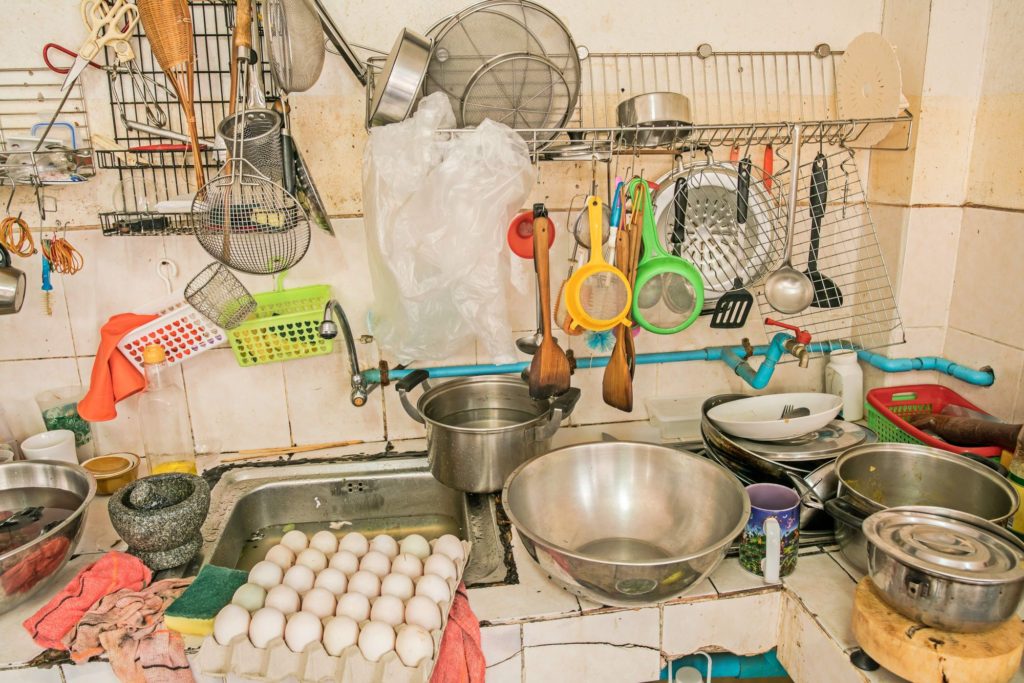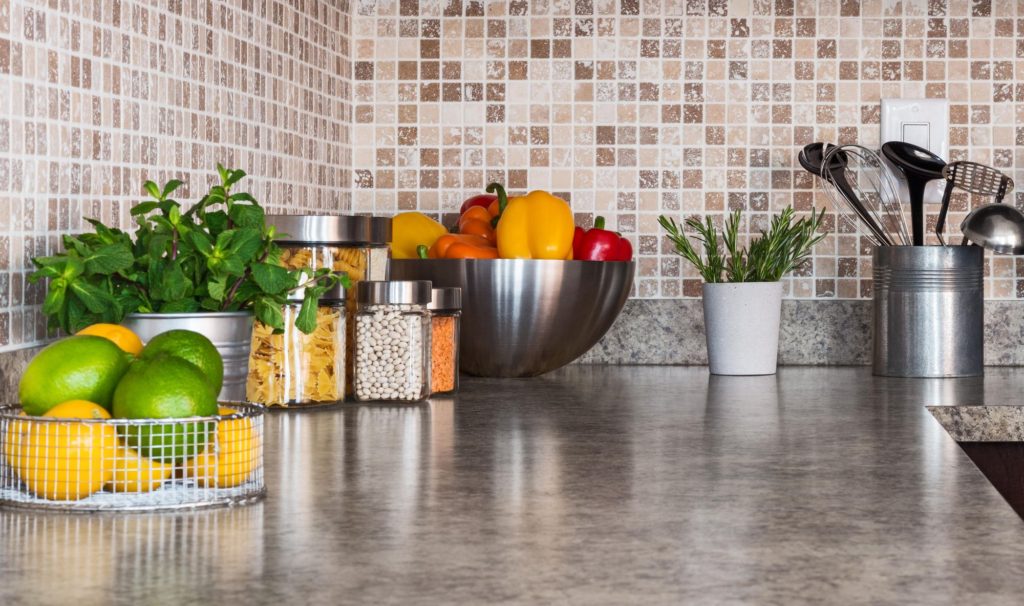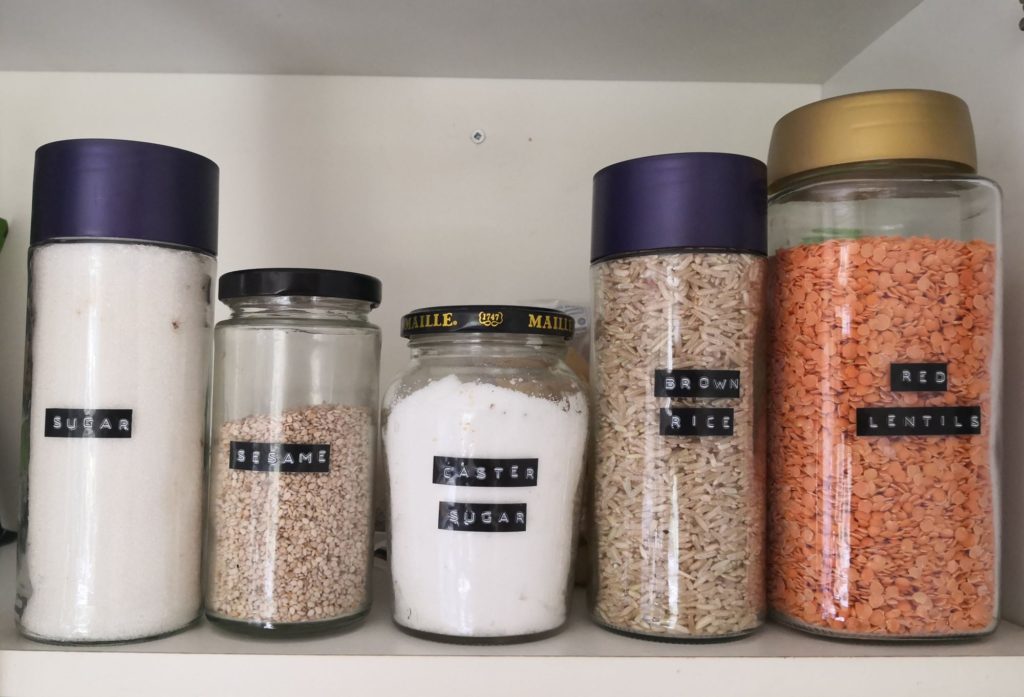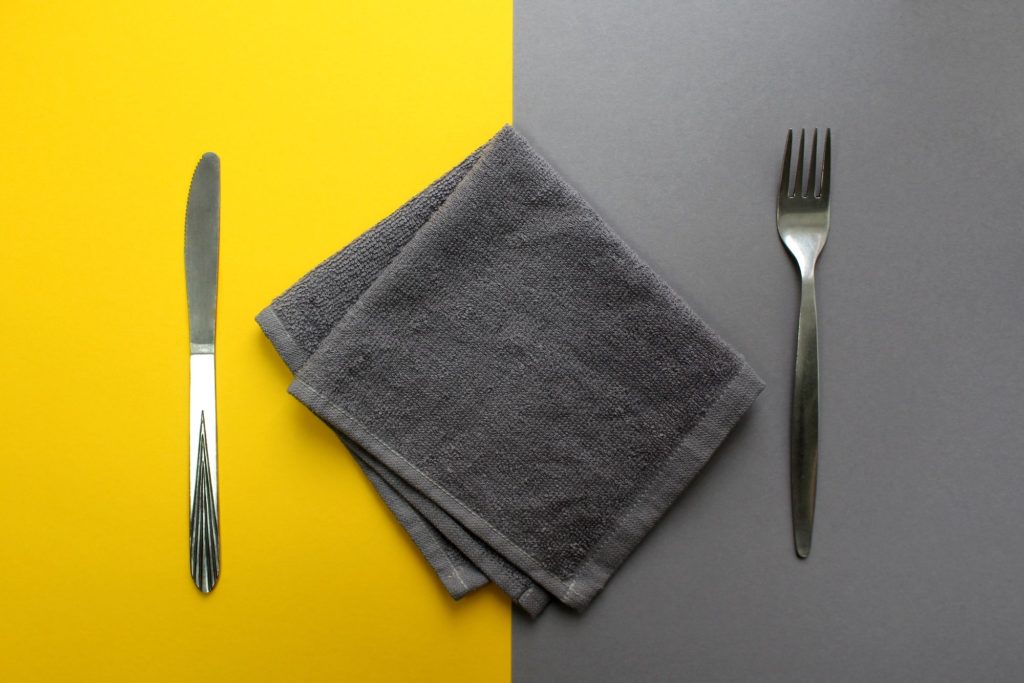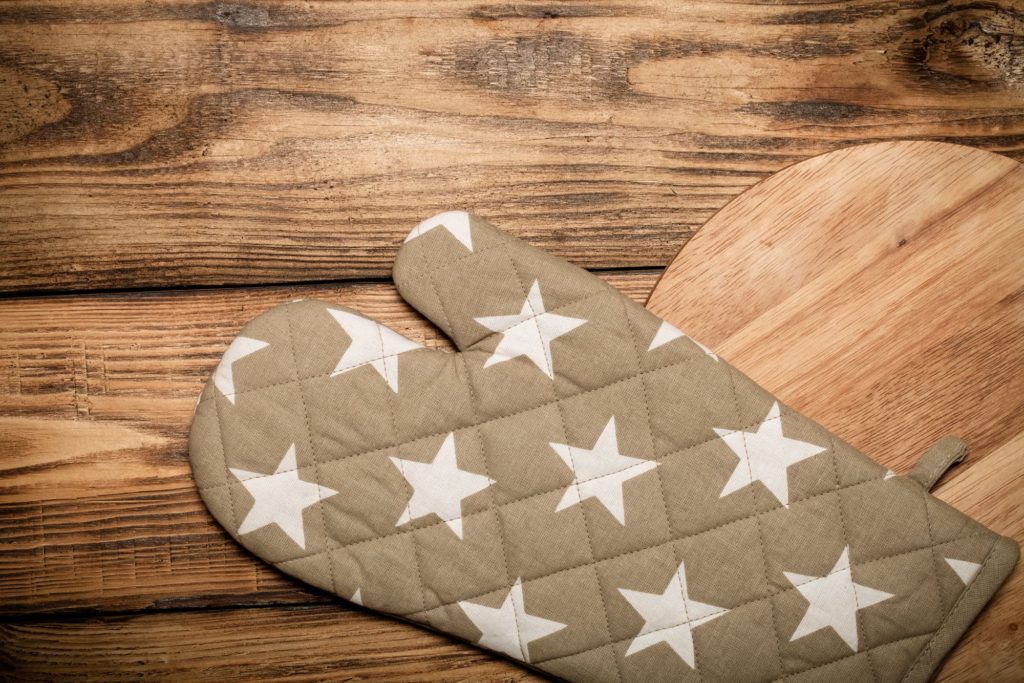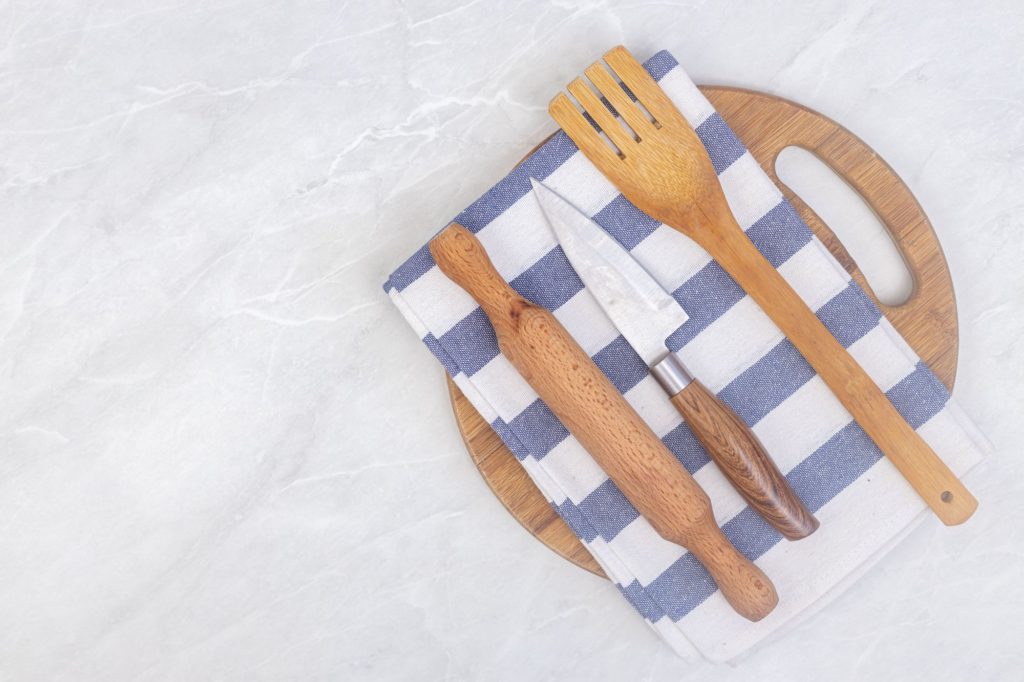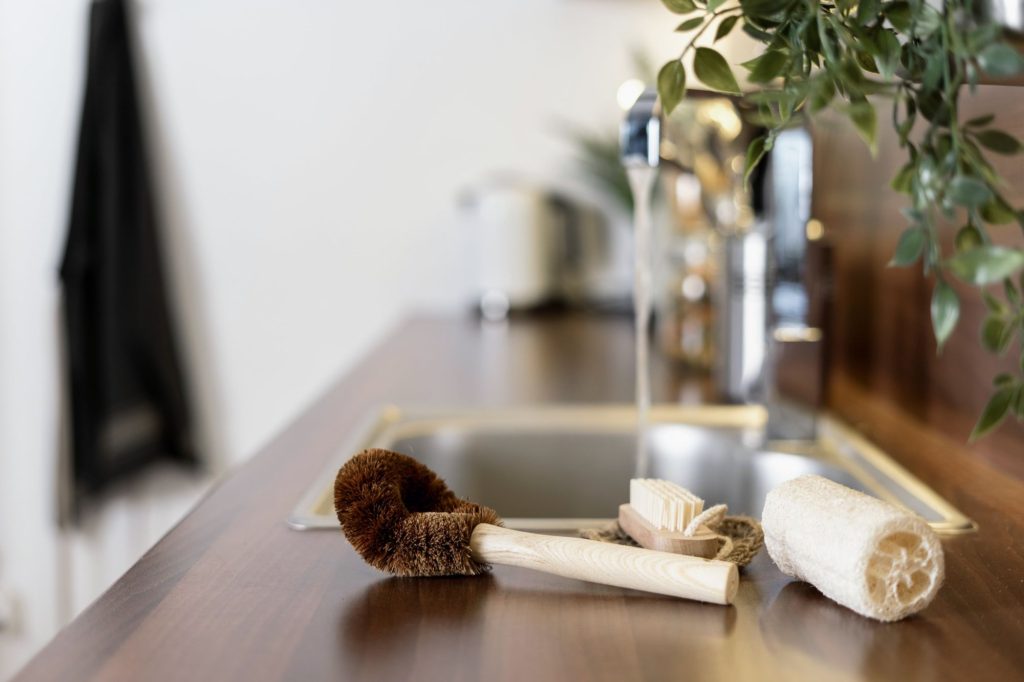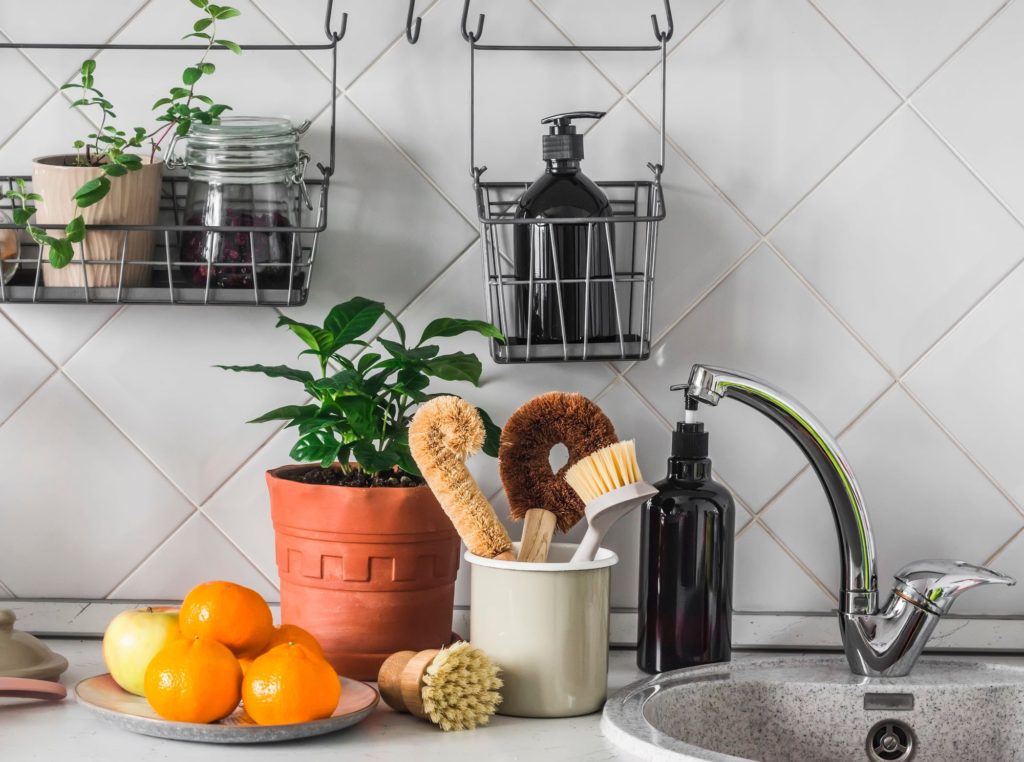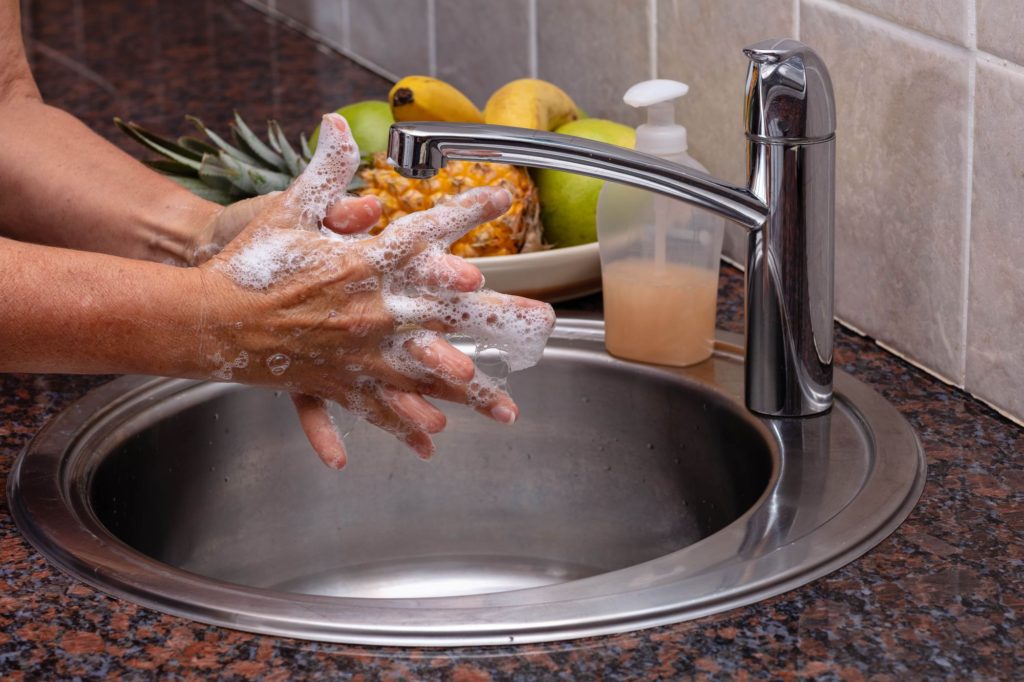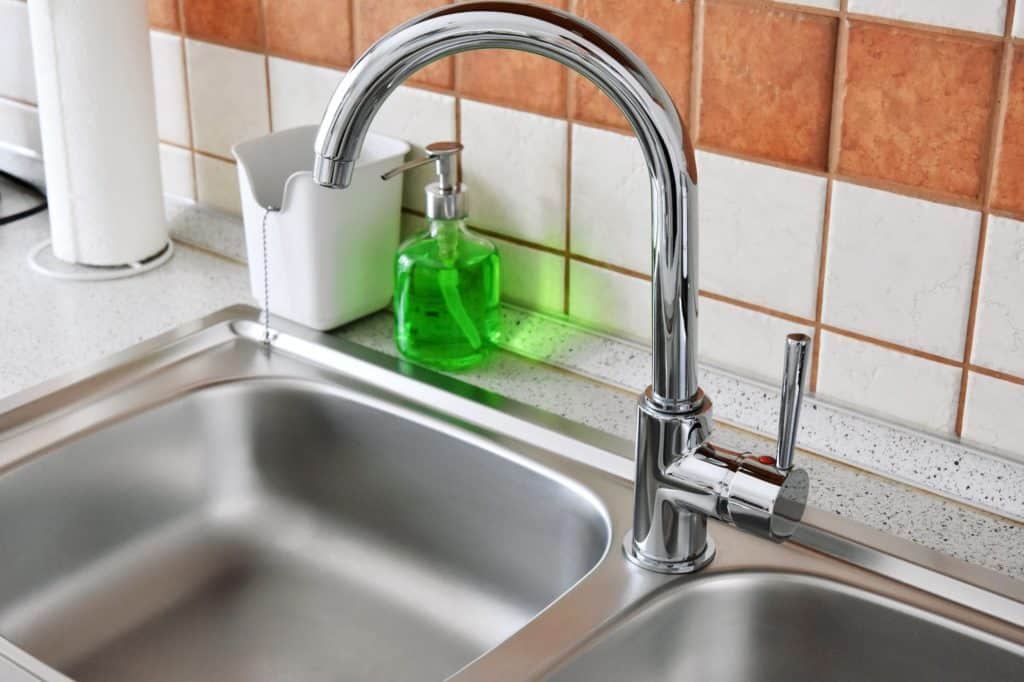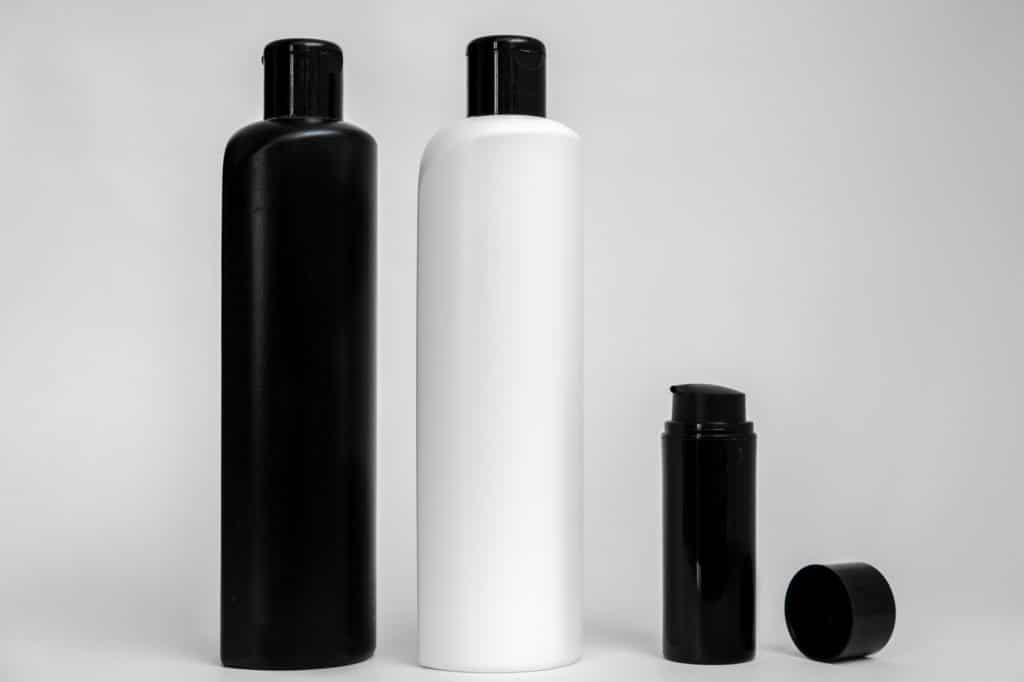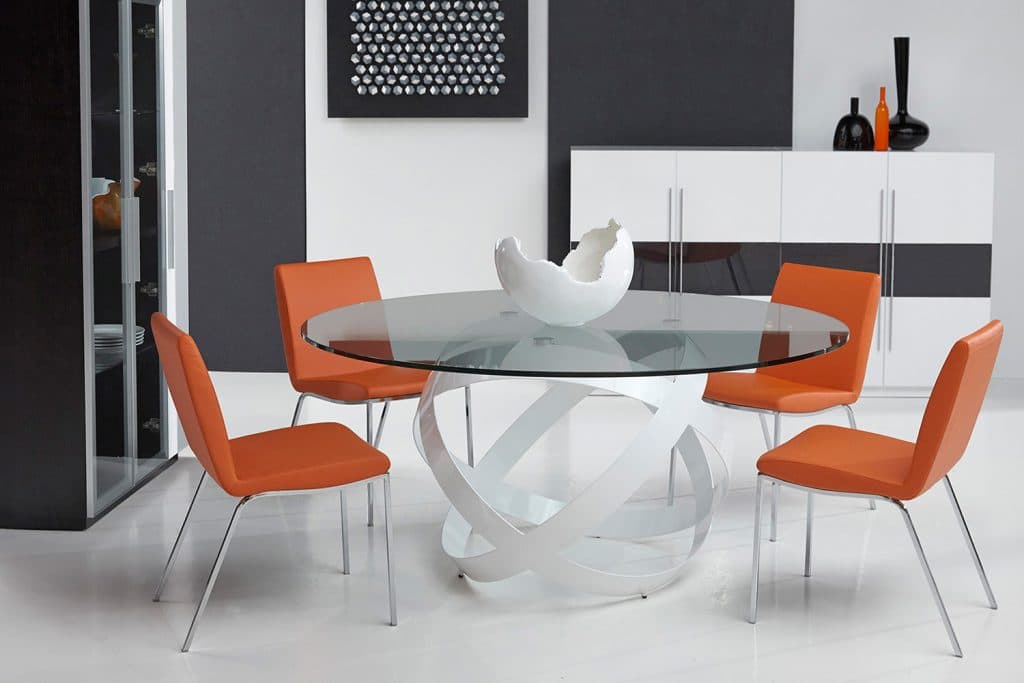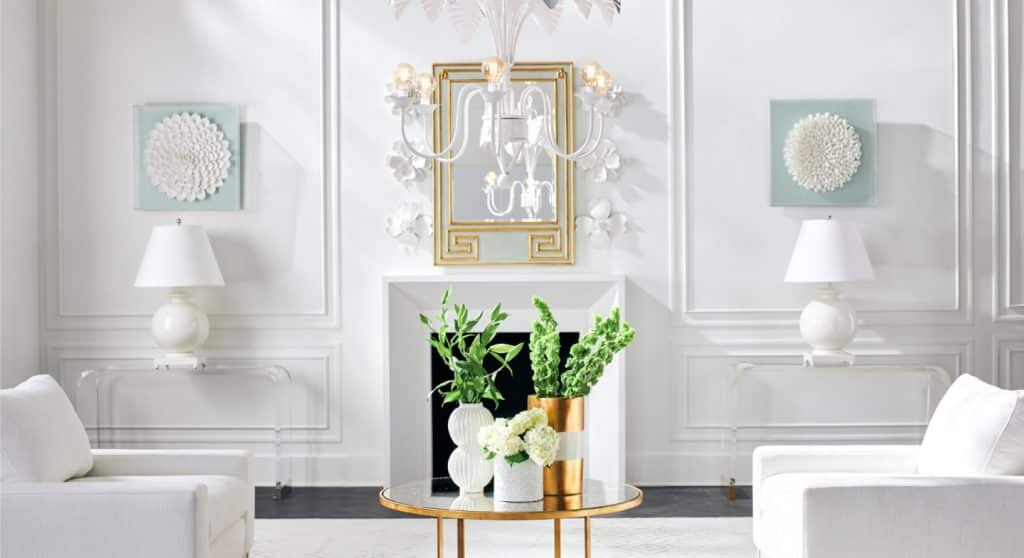Perfection is achieved, not when there is nothing more to add, but when there is nothing left to take away
(Antoine de Saint-Exupery)
So, the renovation is over. You have perfectly matched the color scheme of the interior, installed a suitable kitchen set, but something is missing. Or, on the contrary, there is too much of something. For example, color spots that interfere with our vision of the kitchen as a whole. Seemingly inconspicuous little things like a sponge or detergent, but for some reason the gaze clings to them. They say the devil is in the details and when it comes to design, this is especially true.
Why does a multi-colored sponge in a monochrome kitchen haunt us, what is visual noise and how to get rid of it? You will find the answers in this article.
Visual noise
Initially, “visual noise” is a term used by decorators and interior designers, but recently it has often been heard outside of professional conversations. To put it simply, these are clusters of small and variegated things that stand out from the surrounding space with texture and color, interfering with perception and distracting the eye. Quite simply, it’s a green washcloth in a minimalist light gray kitchen. Shampoo in a bottle with a bright label. Little things that create a sense of clutter, even if the room is cleaned.
But these are not just annoying design flaws. Visual noise is not only unpleasant to the eye but can also interfere with our brains. Have you ever tried relaxing in a room with stained walls? It has been proven that in a monochromatic interior, the human brain feels more comfortable, which means it rests faster. An hour spent organizing the space and ten dollars on new sponges, dispensers гand organizers is not a big price to pay for your peace of mind.
How do you get rid of visual noise?
Organization of space
The first and most obvious step: put everything in its place, hiding the maximum number of equipment items and other large objects. If you have a food processor that is inconvenient to reach for use every time, give it a separate corner: let the blades and bowls be stored next to it, leave the base and parts that you use every day on the table. Move out of sight pots and pans, and stoves that you don’t use all the time. Our task now is to leave the necessary minimum of things “on the surface”.
Gather large items such as a ladle or a skimmer in one place. If they do not fit in a drawer (or are simply always needed at hand), pick up a tall glass or vase to match the interior and put the appliances there. Organize your drying space: this pile of dishes is clearly out of place! If you use a lot of tools in the kitchen, use organizers. When choosing them, be guided not only by color but also by shape and texture. If your kitchen is decorated in a boho style, look for wooden cabinets and drawers. If you are a fan of minimalism – feel free to purchase white and light gray. Give up plastic, at least in the interior: it significantly reduces the cost of the appearance of the home. Fortunately, now you can find a lot of options for organizers made of metal, wood, vine, and even fabric stretched over a light frame.
Hide anything you don’t need tonight. The maximum work surface should be empty.
Harmonization of details
So, all the pots and plates are hidden from view, but something is still wrong. Could it be an old knife holder or a fun-colored tea towel?
Decide what shades you will use in your kitchen design. Designers advise to choose in advance two or three shades of the same range and try not to fall out of it when buying new tools, pieces of furniture, and other things.
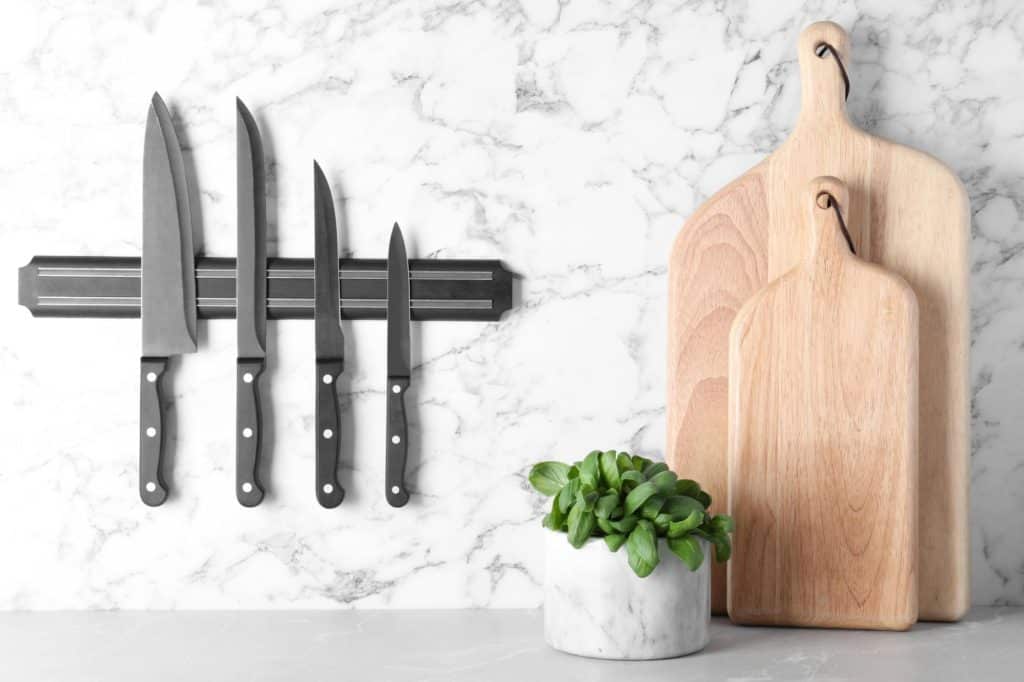
If possible, replace the knife holder with the magnetic tape on the wall. Such a solution not only saves space in the kitchen but also slows down the process of dulling the knives since the blade will not constantly slide along the wood. Plastic planks for cutting meat and vegetables should also be replaced with wooden ones of different shapes and sizes.
Leave the colorful towels for emergencies, and for the kitchen, choose a solid color made of durable fabric. Don’t forget that the texture of the fabric can completely change the visual impression of it! Experiment with materials, the main thing is not to get out of the established range. Potholders, hot dishes fabric coasters – the same case. We exclude as much as possible colors that contrast with the rest of the interior and assemble a set from what we can find in stores. White, beige, light gray, sandy fabric will look much better in your kitchen. If you are a fan of practicality and it seems strange to you to use light towels in the kitchen, choose a dark gray or brown material, just do not forget to observe the uniformity and avoid too much falling out of objects from the general picture.
Replace washcloths, sponges, table cloths with natural cleaners, jute washcloths, and loofah. Everything is quite simple here: unpainted jute, which is used for weaving loofahs, goes well with a coconut brush. Nature has thought of everything for us, at this stage we will trust it. Try to get rid of unnatural colors as much as possible, feel free to replace everything that you can. Replace the plastic soap dish with a luffa or jute backing. Organize your detergents in one place, such as a plain planter above the sink.
Decanting
And now there is no superfluous left on the table, natural washcloths flaunt on the sink, even towels fit perfectly into the interior, but something is still distracting. Most likely, these are factory packaging of detergents, products and other things. Let’s deal with them.
Decanting is a chemical term familiar to many wine lovers. This is the process of separating the sediment from the liquid part, but in the context of interior decoration, the word takes on a new meaning, although it partially retains its meaning. If you transfer cereals to containers from factory packs or pour soap from a plastic bottle into a dispenser, you decant them. In essence, it is a replacement for a wrapper or container for storing a product.
At this stage, we need containers, preferably from the same set or, at least, from similar materials and dispensers for liquid products. Everything is simple here. Pour spices, nuts and cereals into the same containers. On the bottom of the container, you can stick a sticker with the date of opening and the name of the product, this will allow you to control the expiration date.
Pour the detergent into a neutral container: in stores, you can find sets of bottles and dispensers for any need. There is also a simpler option: if the detergent is in a one-color bottle, you just need to peel off the label. Use rubbing alcohol, degreaser, or baking soda and olive oil to remove glue from plastic. A hairdryer will help you to remove stickers from glass containers: it is enough to warm up the paper for a couple of minutes – and it will easily come off, and the remnants of the adhesive base can be cleaned, as in the previous case, with alcohol or vegetable oil.
Try not to leave a single product in its original packaging (unless, of course, they fit into your interior).
That’s all!
Time to admire the result of your labors. In a room free from visual noise, it is easier to maintain concentration, our brain feels calmer, and our eyes do not cling fussily to numerous foci of disorder. It remains only to maintain order and conduct an audit once a month, getting rid of everything that violates the color harmony of your home. Just try it – and you probably won’t want to refuse.
